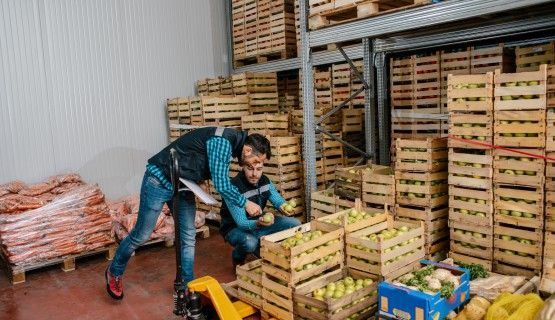Newcomers
Immigrant workers account for much of the labour force growth in Canada. IWH research seeks to understand the work experiences of recent immigrants (newcomers) to Canada, the barriers they face in understanding and accessing their occupational health and safety and workers’ compensation rights and responsibilities, and the tools and programs needed to help ensure they can be safe and productive members of the Canadian labour force.
Featured

At Work article
Employers struggle to provide newcomers with OHS training, support: IWH study
Employers are responsible for providing OHS training and support to keep workers safe. When it comes to workers who are new to Canada, workplaces face particular challenges following through on this responsibility.
Published: November 29, 2022
Project report
Project report
Immigrant workers' experiences of injury reporting and claim filing: final report
The experiences of recent immigrants who are injured on the job, including their knowledge of their rights, encounters with employers and health-care providers, and experiences with injury reporting and claim filing, are detailed in this study report from the Institute for Work & Health.
Published: April 2011
Project report
Project report
Review of safety resources for recent immigrants entering the Canadian workforce
This national scan from the Institute for Work & Health looks at some of the services, programs and resources on occupational health & safety and workers' compensation that are available to recent immigrants to Canada. It also discusses trends in the types of resources available, identifies important gaps, and highlights case studies of programs that present interesting opportunities for providing this information to newcomers.
Published: March 2011
IWH Speaker Series
IWH Speaker Series
A delicate dance with many partners: Immigrant workers’ experiences of injury reporting and claim filing
Based on a qualitative study with new immigrants and service providers, this presentation will examine new immigrants’ experiences of injury reporting and claim filing. Suggested are some ways that policies and practices related to injury prevention, health and safety education and workers’ compensation can be changed to better serve new immigrant workers.
Published: December 2010

Impact case study
Manitoba launches safety initiative for immigrants
Research by IWH team confirms for Manitoba the need to increase OHS awareness among newcomers.
Published: September 2009
IWH Speaker Series
IWH Speaker Series
An examination of the working conditions and risk factors for work-related injuries among immigrant workers in Ontario
In this presentation, Dr. Peter Smith reports the results of a recently completed project at the Institute for Work & Health examining OHS risk factors, work injuries and compensation after injury among recent immigrant workers in Canada. The results suggest that recent immigrants to Canada face a number of OHS hazards that put them at increased risk of work-related injuries requiring medical attention. In addition, the results suggest recent immigrants are at an increased risk of not receiving any compensation following a work-related absence of seven days or longer.
Published: February 2009
At Work article
At Work article
Immigrant workers experience different health and safety issues
Immigrants often experience poorer conditions when they go off to work compared with their neighbours who were born in Canada, even years after settling here. These findings emerged from two new studies by researchers at the Institute for Work & Health (IWH).
Published: August 2008
At Work article
At Work article
Research explores health and safety issues in immigrant workers
Immigrant and migrant workers face different issues than Canadian-born employees, such as language barriers and lack of knowledge about their rights. As the immigrant population increases, this is becoming a growing area of research and policy attention.
Published: February 2007